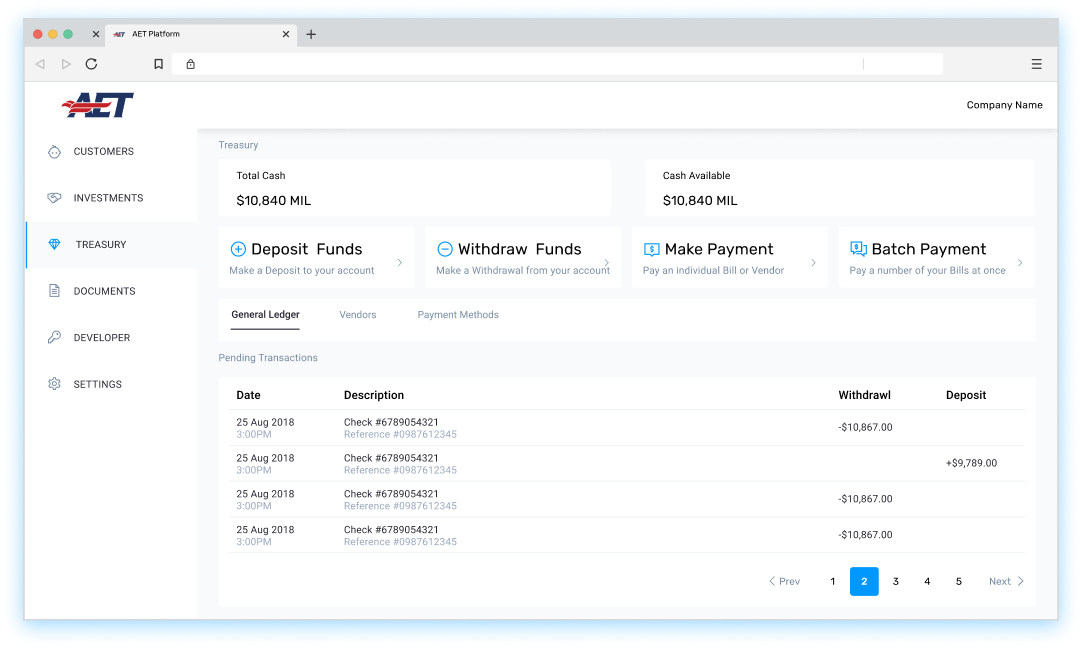Cash Management
Send, Receive & Hold Funds
Safely and securely manage investor funds from a single, user-friendly portal.
- Link financial accounts
- Make distributions
- Collect fees
- Track transaction history


Multi-Faceted
Serving Investments Across the Board
Trust Platform™ supports a diverse range of fund structures and registration types.
Fund Structures
AET supports a wide range of funding options:
- Private Equity
- Real Estate Funds
- Commodity Pools
- Pension Funds
- Crowdfunding
- Fund of Funds
- Endowment Funds
- Hedge Funds
Registration Types
Private Placements
Reg D Funds
506 (a), 506 (b), 506 (c)
506 (a), 506 (b), 506 (c)
S-11 REITs
Reg A+ Funds
Fund Accounting
Financial Reporting Made Simple
Trust Platform’s back end handles accounting and reporting processes at the fund, institutional, or asset levels – all while maintaining the highest compliance standards.
- Tax Services
- Portfolio Reporting
- Financial Statement Prep
Technology
Consolidated Digital Portals
Comprehensive dashboards for you and your investors.
- Provide unparalleled transparency
- Automate investor onboarding
- Manage & scale internal processes
Learn More About AET Solutions